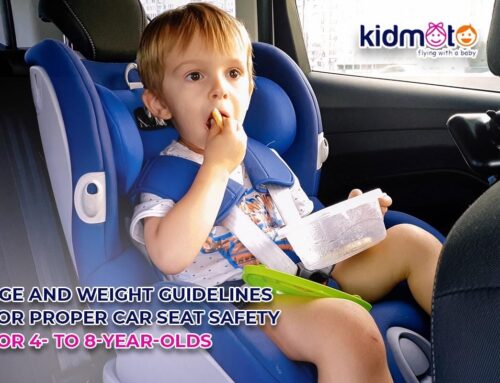Car Seats Expire! Here’s What You Need to Know about Their Expiry Date
When you find great bargains on baby things, it is hard to resist not splurging. But before you decide that you have found a deal, scrutinize the items. With child car seats, check the car seat expiration date first.
Finding the Expiration Date
You might ask, “Do infant car seats expire?” Yes, they do. Child car seats typically expire six to ten years from the date of manufacture. You can find the expiration date on the manufacturer’s label on either the base or the sides, and the label usually contains the manufacture date, model number, serial number, and expiration date. Some car seat brands may imprint these details on the plastic shell of the seat. The location of the manufacturer’s label varies by brand. Just be patient in searching for it.
Reasons Car Seats Expire
There are several reasons car seats have an expiration date, and it is not because of the law because the US does not have regulations over this issue. Car seat manufacturers decided on this matter following general guidelines and:
Materials undergo wear and tear. Straps and belts may not be as well-fitted over time, and even seemingly harmless hairline fractures on the seat base may cause the entire car seat to shatter during a car crash, putting your child at risk. Please note that a car seat is exposed to the car’s changing temperature, contributing to its further deterioration. If you watch crash test videos, you will see how worn down, brittle materials in car seats can make them less safe for your kids to use past their expiration date.
Technology improves. While you might find secondhand car seats in excellent condition, they may not have the latest safety features and lifesaving technologies that on-shelf models have. A good example would be how car seats manufactured before 2002 do not have the Lower Anchor and Tethers for Children (LATCH) safety feature.
Older replacement parts may no longer be available. If you continue using older car seats that need fixing, you might not find the right replacement parts after manufacturers have scrapped them, which they often do to older inventories.
Some parts may get rusted. You might not see it at first look, but metal parts are often susceptible to rusting, which can affect the level of safety that the car seat can offer to your child.
What to Do With Expired Car Seats
So, what do you do with expired car seats? Do not just throw it away whole in the trash. Child passenger safety experts recommend that expired car seat models be dismantled and disposed of to prevent someone from salvaging and reusing them, which is not safe. Remove the foam, fabric, and padding first, then cut the straps and harnesses. Remove the metal parts and put the plastic pieces in the recycling bin.
If you are looking for a car seat that your growing family can use well until its expiry date, buy the newest model. At least it can serve more than one child in your family, depending on your planned gap between kids. Remember that the countdown towards the car seat’s expiration date starts from the date of manufacture, not when purchased. If a car seat on sale was an older model, remember that it now has a shorter lifespan than the newer model. The expiration date is also a good reason not to buy secondhand car seats.
Keep your kids safe in a moving car by using car seats still in their prime, not expired ones. Invest in your child’s safety. Invest in a good car seat.






